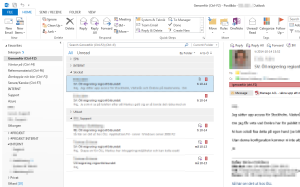
OS X El Capitan: Feels a bit like I’ve invited Captain Blackbeard on my merchant vessel. What could possibly go wrong?
Posts on computer science and the web, rants about OS:es, Window Managers, and the like.

OS X El Capitan: Feels a bit like I’ve invited Captain Blackbeard on my merchant vessel. What could possibly go wrong?
What’s my DNS is a site where you can check the name servers in different locations in the world for a given site. Pretty nice to have when you want to check progress on a name server change.
jsoup is a java HTML-parser that allows you to navigate elements in the HTML via DOM-methods or selector-syntax. You can then extract attributes, text and HTML from the selected elements.
Masonry (masonry.desandro.com) is a JavaScript library for creating grid layouts by placing elements in optimal positions on a web page – like a mason fitting stones in a wall.
It is said that the most complex structures built by mankind are software systems. This is not generally appreciated because most people cannot see them. Maybe that’s a good thing because if we saw them as buildings, we’d deem many of them unsafe.
A thought on remakes of Linux window managers and desktop environments (that give you a mouse elbow because you have to flit the mouse over to a corner every time you want to switch programs…):
The design of the desktop environment on a computer isn’t some f-cking art fair, we’re talking about a tool here! Go play with your X-box instead!
I mean, sure, all these new fancy window managers look really nice, clean and … empty… I guess it speaks to the seriousness of the users of said systems… clean and empty…
 In today’s world, a lot of business communication is happening via mail. We do not have time or patience to sit down and talk on the phone, and a lot of people like to have things “black on white” instead of just floating in the air (like with a phone).
In today’s world, a lot of business communication is happening via mail. We do not have time or patience to sit down and talk on the phone, and a lot of people like to have things “black on white” instead of just floating in the air (like with a phone).
This leads to over full inboxes.
Once your inbox reaches a certain size you start getting anxiety over what actually hides in the pile of musts and to-dos. Did you forget something important? Was there a mail from your boss? How about that project that seems to be stuck? Was there a mail from them?
You don’t know what’s in your inbox, but you can’t just throw away all mails before you know if they are important or not.
I am going to show you a way to keep your inbox empty and at the same time keep track of what mails need attention in what project/from what customer. And all by a press of a button and a drag-and-drop of the mail.
Well, all you need is an installation of Microsoft Outlook and some time to set it up.
Continue reading Taking control of your inbox with Microsoft Outlook
Don’t complain about things (computers, Linux installations, Desktops and Window Managers) being too customizable!
Ask for either administrator locked customizations or customization themes.
If you have to administer a thousand workstations and the users can customize themselves to hell and back twice over, then I can understand you do not want too many customization options open to the user…
Lobby for administrator locked customizations (a customization setting in itself, of course!)
If you feel like starting your computer and trying to set it up is like entering the cockpit of a Boeing 777, then I can also understand that you would like less customization options you had to worry about…
Lobby for a function like a customization theme, where you can download a set of customization settings from the web or get them from a friend.
See, in both these scenarios you’re not really in the need of less configuration, you’re in the need of different configuration…
…if you disagree, buy a Mac! 😛
Puppet is an open source configuration management utility that works on Linux and Windows and has its own declarative language to describe system configuration. (Sounds like just what Windows needs!)